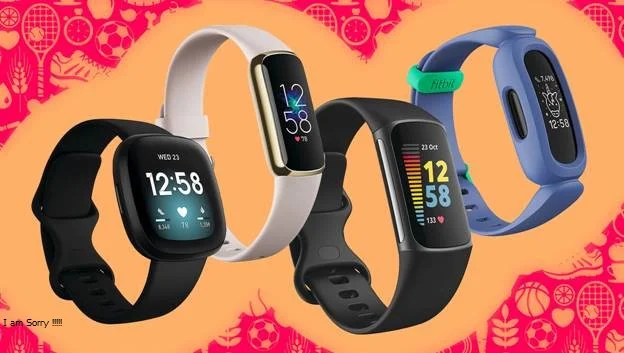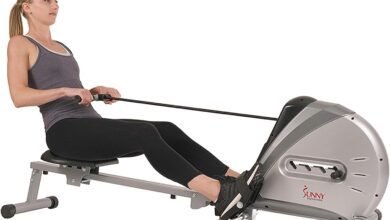How to Select the Greatest Fitness Tracker

Maintaining one’s physical fitness and health is crucial for many people in today’s hectic society. Fitness trackers have become indispensable tools to help people monitor their physical activity set and achieve fitness goals and live healthier lives. With an ever-expanding market offering a multitude of options, finding the best fitness tracker can be a daunting task. This article will guide you through the essential features top choices and factors to consider when selecting the perfect fitness tracker to suit your needs.
Key Features to Consider
Before diving into the top fitness trackers on the market it’s crucial to understand the key features you should look for when making your selection:
- Tracking Capabilities: The primary purpose of a fitness tracker is to monitor your physical activity. Look for a tracker that can accurately measure steps, distance, calories burned and sleep patterns. Some advanced trackers also offer heart rate monitoring, GPS tracking and even blood oxygen saturation (SpO2) measurements.
- Design and Comfort: A fitness tracker should be comfortable to wear especially if you plan to use it daily. Consider the design, materials and band options. Some trackers are designed as wristwatches while others can be worn as clips or even rings.
- Compatibility: Ensure that the fitness tracker is compatible with your smartphone or other devices. Most trackers sync with mobile apps, which allow you to track and analyze your data, set goals and receive notifications.
- Battery Life: Nobody wants a fitness tracker that needs constant charging. Look for a tracker with a long-lasting battery, ideally lasting at least 3-7 days on a single charge.
- Water Resistance: If you plan to use your fitness tracker for swimming or water-based activities choose one with a high water resistance rating. This will prevent damage from splashes or immersion in water.
- App Ecosystem: The quality of the accompanying app can greatly affect your experience. A robust and user-friendly app will help you track your progress effectively and keep you motivated.
Top Fitness Tracker Options
Now that you know what to look for in a fitness tracker, let’s explore some of the top options available as of my last knowledge update in January 2022:
- Fitbit Charge 5: Fitbit has been a leader in the fitness tracking industry for years. The Fitbit Charge 5 offers features like heart rate monitoring, built-in GPS, sleep tracking and a variety of workout modes. It also provides a comprehensive app for tracking and analyzing your data.
- Apple Watch Series 7: While primarily known as a smartwatch the Apple Watch Series 7 includes robust fitness tracking features including heart rate monitoring, GPS and a variety of health apps. It’s particularly well-suited for Apple ecosystem users.
- Garmin Venu 2: Garmin is known for its excellent GPS technology and the Venu 2 lives up to that reputation. With a stunning AMOLED display a wide range of activity tracking features and advanced health monitoring it’s a top choice for fitness enthusiasts.
- Xiaomi Mi Band 6: For those on a budget the Xiaomi Mi Band 6 offers incredible value. It has an impressive AMOLED display heart rate monitoring, sleep tracking and a long-lasting battery life.
- Samsung Galaxy Fit 2: Samsung’s Galaxy Fit 2 is another budget-friendly option with a bright AMOLED display heart rate monitoring, and various fitness modes. It’s a great choice for Samsung device users.
Physicians advise using fitness trackers
Dr. Seth Martin, M.D., M.H.S., is a renowned cardiologist at Johns Hopkins University who strongly believes in the benefits of fitness trackers as powerful tools for improving heart health. With his extensive expertise and experience in the field of cardiology Dr. Martin has become a vocal advocate for the use of these devices to promote a healthier lifestyle and enhance cardiovascular well-being.
Dr. Martin emphasizes that adopting a more active lifestyle is crucial for heart health. Sedentary lifestyles are a significant contributor to various heart-related issuesincluding hypertension, obesity and cardiovascular disease. By incorporating fitness trackers into one’s daily routine, individuals can gain valuable insights into their physical activity levels and make informed decisions to improve their overall health.

The tracker’s range is the longest
Among the various types of electronic gadgets available GPS trackers that rely on satellite technology stand out as having the most extensive range. These remarkable devices have a unique advantage over other tracking methods as they are not restricted by the limitations of cellular networks or the need for proximity to the transmitting device. Instead they establish a direct connection with a network of satellites orbiting high above the Earth’s surface.
The fundamental principle behind GPS (Global Positioning System) trackers is to triangulate the user’s position by communicating with a network of satellites positioned in Earth’s orbit. This network comprises at least 24 satellites which are part of the United States Department of Defense satellite constellation. The satellites transmit signals that GPS devices receive, allowing them to pinpoint their exact location based on the time it takes for signals to travel from multiple satellites to the device.
Health trackers worthwhile
Fitness trackers can be incredibly helpful tools in your quest for a healthier lifestyle. These wearable devices offer a plethora of information and data that can aid you in monitoring and improving your overall fitness and well-being.
One of the primary benefits of fitness trackers is their ability to track and provide real-time data on the number of calories you burn throughout the day. This data is derived from various metrics, including your heart rate, activity level and even factors like age and weight. By having a clear understanding of your calorie expenditure, you can make more informed decisions about your diet and exercise routines.
Accurate fitness trackers
Often, when you’re engaged in vigorous physical activity and find yourself perspiring profusely fitness trackers and smartwatches may struggle to provide a thorough and precise reading of your heart rate. This limitation stems from the inherent challenges associated with accurately monitoring heart rate during periods of intense exercise.
Numerous scientific studies have shed light on this issue consistently revealing that these wearable devices excel at capturing accurate heart rate data when the wearer is at rest or during the recovery phase of a workout. In such scenarios these gadgets tend to deliver reliable and dependable readings, making them valuable tools for tracking and managing one’s fitness and health.
The Drawbacks of a wearable fitness device
Fitness trackers have become increasingly popular tools for individuals looking to monitor their physical activity and overall health. However they come with a set of drawbacks that can affect their overall effectiveness. Here we’ll discuss some of these drawbacks and potential solutions:
- Inaccurate Data:
- Drawback: Fitness trackers are not always accurate in measuring various parameters such as calorie burn, heart rate and step counts. They rely on sensors and algorithms which can provide estimates rather than precise measurements.

- Potential Fixation: To address this issue manufacturers can work on improving the accuracy of their sensors and algorithms. Regular software updates can help fine-tune the tracking mechanisms making them more reliable over time. Users can also manually calibrate some data, like stride length for more accurate distance tracking.
- Overtraining Risk:
- Drawback: Relying too heavily on fitness trackers can lead to overtraining. Users might push themselves to meet arbitrary step or calorie goals, potentially resulting in injury or burnout.
- Potential Fixation: Education is key here. Users should be informed about the importance of listening to their bodies and not solely relying on the tracker’s recommendations. Manufacturers can provide guidance on setting realistic goals and incorporating rest days into the fitness routine.
- Cost:
- Drawback: Many fitness trackers come with a significant price tag making them inaccessible for some individuals.
- Potential Fixation: Manufacturers can explore producing more affordable options that still provide basic tracking functionality. This can help make fitness trackers more accessible to a wider audience. Additionally users can consider the long-term health benefits and cost savings when making their purchase decisions.
- Battery Life:
- Drawback: Fitness trackers often require frequent charging which can be inconvenient, especially for those who forget to charge them regularly.
-
- Potential Fixation: Manufacturers can work on improving battery life to reduce the frequency of charging. Users can also establish a charging routine such as charging the device overnight to ensure it’s ready for the day ahead.
- Doesn’t Compute Every Action:
- Drawback: Fitness trackers primarily focus on activities like walking, running and cycling. They may not accurately track activities like weightlifting, swimming or yoga.
- Potential Fixation: While fitness trackers can’t capture every type of activity users can manually log non-tracked activities or use specialized devices for more accurate tracking of specific exercises. Manufacturers can expand the range of activities their trackers can detect but it’s a challenging task due to the wide variety of possible activities.
No longer use a fitness tracker
Furthermore it’s crucial to consider that your data could become skewed if there’s even a minor flaw in the software running on your phone or the wearable fitness tracker you’re using. Such imperfections in the technology can lead to inaccuracies in the information you’re collecting making it difficult to determine whether you’re recorded numbers are too high or too low.
These inaccuracies can manifest in various ways. For instance, sensor calibration issues or software bugs may lead to irregular data readings. Your heart rate monitor may intermittently spike or drop your step count might be imprecise or the sleep tracking feature may not accurately reflect your sleep patterns. Such discrepancies can have a significant impact on the reliability of the health and fitness data you rely on.
Put the watch on the arm
Using your less dominant arm to wear your activity tracker offers several advantages that can lead to more accurate data recording ultimately enhancing the effectiveness of your fitness and health monitoring. This approach is particularly beneficial when it comes to tracking your daily activities and sleep patterns. Here’s a thorough breakdown of these benefits:
- Reduced Motion Variability: When you wear your activity tracker on your less dominant arm, it experiences less movement throughout the day. This is because your dominant hand is typically more active due to daily tasks like writing, eating and handling objects. As a result the tracker on your less dominant arm is less likely to register false positives, such as counting steps when you are not actually walking. This reduces the occurrence of inaccurate data being recorded ensuring that your activity tracking is more precise.
- Enhanced Sleep Data Accuracy: Activity trackers often include a sleep monitoring feature that tracks your sleep patterns, including the duration and quality of your sleep. Wearing the tracker on your less dominant hand can provide more accurate sleep data for several reasons:
- Reduced Arm Movement during Sleep: Your dominant hand tends to be more active even during sleep as you may unconsciously shift positions, scratch or move it more frequently. When your tracker is on your less dominant arm it is less likely to pick up these sporadic arm movements ensuring that your sleep data remains undisturbed and more accurate.
- Decreased Interference with Sleep Comfort: Wearing an activity tracker on your less dominant arm can also be more comfortable during sleep. Your dominant hand is often used for various actions during the night and having a bulkier device on that wrist can disrupt your sleep or even lead to unintentional removal of the tracker. On the contrary, wearing it on your less dominant hand can reduce the chances of discomfort or interference, thus ensuring a more stable sleep data recording.
Q: What distinguishes a fitness tracker from a fitness watch?
A:A fitness tracker is the best option if all you want is something that primarily monitors your health. Choose the fitness tracker, smartwatch or Apple Watch that best meets your health needs by looking through our selection. Choose a smartwatch instead, if you want additional features and prefer to have everything in one spot.
BOTTOM LINE
The best fitness tracker for you will depend on your individual needs, preferences and budget. Consider the features that matter most to you whether it’s advanced tracking capabilities a stylish design or seamless integration with your smartphone. With so many options available you’re sure to find the perfect fitness tracker to help you achieve your health and fitness goals.





